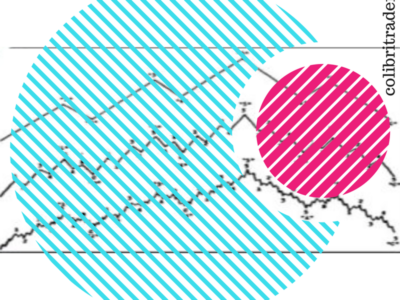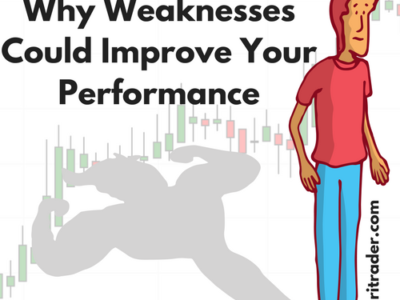Different Trading Styles
There are various different types of trading styles, and matching your own personality to the one most suitable is critical to your own trading longevity.
Certain types of trading signals and strategies definitely favor certain market conditions and more specifically, trading styles. A lot depends on the time one intends to be in a trade, how entry and exit levels are chosen, and to some extent, the frequency with which one intends to trade.
Quite often traders will tend to blend many of these signals and choices into a single trading style, using one set to determine entry levels, and then perhaps switch to another set to manage the position during the life of a trade and eventually determining the exit point.
For the most part and very, very broadly defined the below list are the most common trading categories in which the various trading signals fit into (arranged from most active to generally least active):
- Scalping
- Day or Intraday Trading
- Technical Trading
- Swing Trading
- Trend Trading
- Fundamental (Macro / Value Trader)
- Investor
It is important for you to differentiate which type of trader you are and in which general category you fit.
The aim would be that once you have defined which category of trader you are (or aim to be), you will then identify all the relevant trading patterns and indicators that are typically applicable or commonly used with that particular style.
SCALPING
Scalping is by far the most time demanding trading style out there. You literally have to be glued to your screen the entire trading session. The aim with scalping is to pick up a whole bunch of small movements moving in and out of a trade regardless of the direction, with only a few profit pips made at a time as the main goal. It is not uncommon for a scalper to be in a trade literally for a few minutes only.
One can imagine that this style has the potential to yield a massive return. In fact, annualised returns measured on a per trade basis usually are astronomical. The problem however is that very few traders actually survive this style of trading. It is extremely demanding and probably one of the hardest trading styles to get used to. Having said that though, ironically enough this is also the style of trading that many novice traders are drawn to, only to yield disastrous results.
If ever there was a style that demands you keep to the trading rules, then this style takes the prize. No room is left for interpretation, when you see a signal you react, plain and simple.
Scalpers usually trade on a very short time frame chart pattern, like 1, 2 or 5 minute chart intervals. Furthermore a definitive “must have” for this style of trading is what is commonly referred to as a 1-click trading. This refers to where your broker system on which you execute trades let you enter a trade with just 1 click. Usually one would enter a trade, then you need to enter an amount and then you submit the button, and then another confirmation message appears to ask if you really want to trade, and then only once you press the submit button is the trade sent through for processing. You can see how this process would be tedious for a scalper, for them they usually set a standard contract value and a “rapid fire” setting allowing them to trade by just clicking on the buy or sell button once.
DAY OR INTRADAY TRADING
A day trader or intraday trader generally holds positions for a relatively short period of time. The key difference between the two is that positions for an intraday trader are opened and closed within a single day’s trading session. Most often their trading limits/style does not allow to run positions over night as they would prefer to not have exposure to the market at times, they are not there to watch it. A day trader therefor most often ends up being an intraday trader, with the exception that if a position signal is still supported, they will run the position over night.
Though similar to scalping in the sense that these traders use very short time intervals, a day trader generally aims to catch a slightly longer ride on the trend than a scalper. As an example, they may in fact Swing trade a 1-hour chart, something that is generally expected for longer term momentum traders. By them reducing the time frame over which the swing signals are produced one can say its like trend trading on steroids
TECHNICAL TRADING
Technical trading refers to a style of trading where one’s decision to enter or exit any particular trade is not based on the relative performance / strength of an underlying asset or instrument itself, but instead directly as a result of a chart formation and the expectation of price action around this formation.
In other words, where one does not buy a stock because the company is doing fantastically well, but instead that the price movement created a specific chart pattern which can be explored. Thus, more a case of trying to profit from the herd mentality of trading. For this reason technical analysis is often referred to as a self-fulfilling prophesy, especially in instruments that are widely traded with a lot of liquidity.
A Technical Trader therefor will purely use technical signals to analyse which securities to trade, to decide on a particular entry point, dictating how they will manage the position during the life of the trade as well as at which point they will exit (or where to place their stop loss points during the trade). They typically exit positions when the chart pattern (or technical signal) is complete and not based on a set time frame (as would be the case with a day trader as an example).
For the most part, the bulk of the trading styles mentioned here are fundamentally, and at their core technical traders, with the key difference being expressing their views across different time frames. So by this definition it is not uncommon for technical analysis to be included in all forms of trading (from Scalping to Swing Trading).
SWING TRADING & TREND TRADING
I group these two styles together as there really are not much fundamental difference between these two styles of trading. They both employ the same type of analysis to identify trades and entry levels with the only remarkable difference being on the way these traders exit positions.
For this reason, swing trading most often have shorter trading periods than Trend Traders in general given that a Trend Trader’s aim is to catch huge long-term trends scaling into positions and often only exiting after many weeks, months or sometimes even years, when the overall direction of the major trend has changed.
Swing traders on the other hand will exit positions when interim stop loss levels are triggered, or a profit target is reached.
So in practice one would see a Swing Trader trade the exact same trend as the Trend Trader, however moving in and out of the trend many times more often than the Trend Trader does. Realise of course that there are no hard and fast rules as all this depends on the time frame of the charts each would use (hence me grouping these two categories into one).
This style of trading is where we will spend the most of our time in. In fact it’s probably the most popular style for anyone who works full time.
With the aim of this style of trading being to catch large movements (trends), there really is no reason to be glued to your screen the whole time, and quite often most analysis take place after the market has already closed. The frequency of market analysis can also be far less demanding ranging from daily or a weekly basis only.
I refer to this style as a “trade as you go” mentality. Trading is an enjoyment factor not a punitive factor so why add additional stress to your day if you don’t have to.
FUNDAMENTAL (MACRO TRADING) AND INVESTING
I include these styles of trading purely for reference.
Don’t get me wrong, Fundamental Analysis remains an imperative style of analysis that works wonders for a specific sub-section of instruments / securities (especially in stocks and bonds or where fundamental economic policy shifts occur in the case of currencies).
This however I will leave to discuss in detail in the general finance section of this website as it has limited use for the type of trading we will embark on for now.
The post Different Trading Styles appeared first on My Dad The Trader.
Source:: Different Trading Styles














